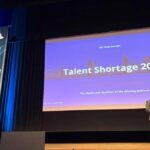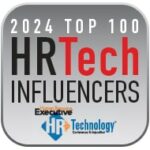In the fast-paced, ever-evolving landscape of the modern workforce, decisions that shape the destiny of individuals and organizations alike must be made with utmost precision. As the realm of Human Resources faces new challenges and opportunities, the emergence of big data and analytics has presented a captivating paradigm shift. Delving into uncharted territories, HR professionals are increasingly leveraging the power of data to revolutionize one particular aspect of their domain: outplacement. With this exponential growth in data collection and analysis, a fascinating narrative is unfolding—a tale of how the amalgamation of big data and outplacement is transforming HR decision-making, rewriting the fate of employees, and reshaping the course of businesses across the globe.
1. Unleashing the Power of Information: How Big Data is Transforming HR Decision-Making
Big Data has revolutionized the way HR departments make critical decisions. With access to vast amounts of information, HR professionals can now analyze and interpret data like never before. This data-driven approach empowers organizations to make better-informed decisions regarding their workforce, fostering more efficient recruitment, employee engagement, and talent management processes.
One significant advantage of utilizing Big Data in HR decision-making is its ability to uncover patterns and trends that might otherwise go unnoticed. By mining through large sets of employee data, such as performance reviews, attendance records, and engagement surveys, HR departments can identify key insights that drive strategic workforce planning. For instance, the analysis may reveal correlations between specific hiring practices and employee retention rates, enabling HR to refine their recruitment strategies for better talent acquisition and retention results.
- Improved recruitment strategies: By analyzing applicant data, including educational backgrounds and past work experiences, HR can identify the characteristics that align with successful hires, streamlining the recruitment process.
- Enhanced employee engagement: Big Data allows HR to monitor employee sentiment in real-time, identifying potential issues and implementing proactive measures to boost engagement and job satisfaction.
- Targeted skill development: Through data analysis, HR can identify skill gaps within the workforce and design targeted training programs to enhance employees’ skill sets.
With Big Data’s ability to provide valuable insights, organizations can harness the power of information in making data-driven, effective HR decisions.
2. The Rise of Big Data Analytics in Outplacement: A Game-Changer for HR Professionals
In today’s digital era, the emergence of big data analytics has revolutionized various industries, and the field of human resources is no exception. The utilization of big data analytics has become a game-changer for HR professionals, particularly in the area of outplacement services. With its ability to analyze vast amounts of data, big data analytics enables HR professionals to make more informed decisions, streamline processes, and enhance overall efficiency in providing outplacement support.
One of the key advantages of big data analytics in outplacement is its capability to identify trends and patterns within employee data. By analyzing factors such as job titles, skills, and tenure, HR professionals can gain valuable insights into the specific needs and preferences of individuals who are transitioning out of the organization. These insights can be used to tailor outplacement programs and resources to meet the unique requirements of each employee. Additionally, big data analytics can aid HR professionals in predicting future job market trends and demand, allowing them to better prepare individuals for their future career paths. By leveraging the power of big data, HR professionals can optimize the outplacement process and provide tailored support that ultimately leads to successful employee transitions and increased satisfaction.
3. Unveiling the Hidden Insights: Harnessing Analytics to Optimize Outplacement Strategies
Analytics is revolutionizing the way organizations approach outplacement strategies, enabling them to unlock invaluable insights that were once hidden. By harnessing the power of data, companies can now optimize their efforts and support employees in their transition to new career paths more effectively than ever before.
So, how exactly can analytics be leveraged to enhance outplacement strategies? Let’s explore some innovative ways:
- Identifying Trends and Patterns: Analytics allows organizations to analyze large amounts of data to identify patterns and trends in employee job searches, job market demands, and industry fluctuations. This valuable information provides valuable insights into which industries are thriving, which skillsets are in high demand, and how to position employees for success in this dynamic landscape.
- Matching Skills with Opportunities: With advanced analytics tools, companies can now accurately match employees’ skills and experience to available job opportunities. By utilizing AI algorithms, organizations can assess individuals’ competencies and align them with suitable positions, enabling a more streamlined and successful job search process for employees.
- Tracking Employee Progress: Analytics provides a comprehensive view of employees’ progress throughout their outplacement journey. By monitoring key metrics such as time to reemployment, job satisfaction, and career advancements, organizations can identify areas for improvement and tweak their strategies accordingly, ensuring employees receive the necessary support and guidance during this transitional phase.
4. From Guesswork to Informed Decisions: How Big Data is Revolutionizing HR Approaches to Outplacement
Big data has become a game-changer in the world of Human Resources, particularly in the area of outplacement. Traditionally, decisions related to employee transitions were largely based on guesswork and intuition. However, with the advent of big data, HR professionals can now make informed decisions that yield greater results.
One of the key ways big data is revolutionizing HR approaches to outplacement is through enhanced predictive analytics. By analyzing vast amounts of data, HR departments can identify patterns and trends that were previously difficult to uncover. This allows them to predict future job market demands, identify transferable skills, and even forecast the success of specific outplacement strategies. Armed with this knowledge, HR professionals can create personalized outplacement plans that are more likely to lead to successful job transitions for their employees.
As we dive deeper into the age of digital transformation, it becomes indisputably clear that the intricate dance of big data and outplacement has finally taken center stage in the world of HR decisions. The curtain has been drawn back, revealing a dynamic partnership between analytics and human resources, two seemingly distant entities now united in a harmonious duet.
Gone are the days of relying solely on intuition and gut feelings in the pursuit of optimizing workforce strategies. Today, a symphony of data sways HR professionals to a new rhythm, guiding them towards smarter decisions. Analytics has stepped up as their trusty conductor, gracefully orchestrating the delicate balance between employee satisfaction and organizational efficiency.
In this mesmerizing performance, data dons many roles, transforming from a mere backstage technician to a star soloist. It weaves intricate patterns, creating a tapestry of insights that illuminates the HR landscape. By meticulously analyzing vast arrays of information, big data unfurls its powerful wings, uncovering patterns, trends, and hidden potentials that were previously trapped in the shadows.
With each passing day, the interaction between analytics and HR deepens, revealing opportunities that were once unimaginable. Predictive algorithms prance across the stage, foretelling the future with uncanny accuracy. They paint a vivid picture of each employee’s potential, identifying their strengths and weaknesses, and guiding HR professionals towards personalized development plans that foster growth and unleash untapped talent.
But let us not forget the indomitable spirit of empathy that runs through the veins of HR decisions. It is this empathy that ensures the human touch remains ever present amidst the buzzing whir of data and algorithms. The dance between big data and outplacement is not a cold and calculating tango, but a warm and understanding waltz, where the needs and aspirations of employees take center stage.
With the growing role of analytics in HR decisions, we find ourselves on the precipice of a new era where enlightened organizations recognize the transformative power of data-driven methodologies. In this harmonious partnership, HR professionals wield the baton of knowledge, blending the insights derived from analytics with their instinctive understanding of human nature.
So let us embrace this convergence of big data and outplacement, for it holds the potential to revolutionize the realm of HR decisions. As the final note resounds, we embark on a journey where human intuition and technological prowess intertwine, forging a path towards a brighter, more prosperous future where both employees and organizations thrive in perfect synchronization.








